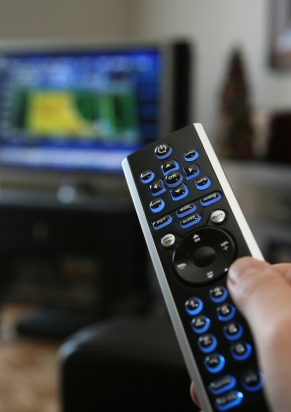 In the last few years, the U.S. has seen rapid growth in its Hispanic population. As this population continues to grow, so too does Hispanic-targeted media. Of course, the question is, just how large is this growth? And how are television networks responding?
In the last few years, the U.S. has seen rapid growth in its Hispanic population. As this population continues to grow, so too does Hispanic-targeted media. Of course, the question is, just how large is this growth? And how are television networks responding?
According to Station Index, which tracks TV station growth, 10 of the top 100 television markets are metropolitan areas that include large populations of Hispanics like New York, Los Angeles, and Houston. These three markets are also in the top Hispanic markets list. One of the networks serving all three areas is Univision.
During primetime programming, a massive 67 percent of Univision’s viewership between the ages of 18 and 49 stay on the channel, according to The Nielsen Company. That’s more than triple the percentage of those viewers who watch NBC, CBS, ABC, or FOX according to the same statistic posted on Univision’s website.
Another Spanish-language network, Telemundo, of NBC Universal, has recently begun implementing plans to meet the demands of Hispanic-targeted programming. According to the Hollywood Reporter, by the end of January 2012, the network will raise local news and public affairs programming by 25 percent. While this plan may not be available nationwide just yet, many television markets with large Hispanic populations will see the change, including Los Angeles, New York, Miami, Houston and Chicago. “This is a great way to show the commitment that networks like Telemundo have to serve the needs of the public,” said Ronald Gordon, president of Telemundo Station Group, as reported by the Hollywood Reporter. “The expansion of local news and public affairs programming at the Telemundo owned stations reinforces our commitment to the communities we serve.”
Just how much can this increase in Hispanic-targeted programming raise Hispanic viewership? According to The Nielsen Company, 66 percent of Hispanics watch some Spanish-language television, while 86 percent watch some English-language television. Dig deeper into their viewing habits and it’s clear why Spanish-language networks like Univision and Telemundo are focusing on expansion and growth. According to Nielsen’s Hispanic Acculturation Model, those Hispanics under acculturation level four, or least acculturated, watch three or more hours of television a day. By comparison, according to the Bureau of Labor Statistics of the United States Department of Labor, people watch television for 2.7 hours a day as a leisure activity. These networks will need to adapt as today’s Hispanic population becomes more acculturated.
Being the largest network doesn’t always mean being the most stable. In the last few months up to last year, about seven newscasters have moved from one station to another, or have changed the newscasts they work for under Univision Network or its local affiliate stations. Of those, three have changed stations. The others have added to their responsibilities or changed them. For example, Hector Urrutia, an anchor at the Univision affiliate station in El Paso, Texas, joined the 5 p.m. newscast in addition to his duties with the 10 p.m. newscast.
Many talk and news shows have been taken off the air as well. Most notably, Univision Network cancelled its talk show “El Show de Cristina” (“Cristina’s Show”) last November, which featured celebrities and politicians. After 21 years on the air, the network was looking to adopt a new image for its rapidly growing audience. Since then, seasonal programs have been added to fit the timeslots until 11 p.m., when the local affiliate newscasts air their evening newscasts.
Not surprisingly, the drastic changes to Univision’s programs do not end there. Perhaps the network’s most recognized program is its morning show “Despierta America” (“Wake Up America.”) Like many of the other programs, it has lost longtime on-air personalities and replaced them with new faces. “It was my ideal place, but I understand that I don’t fit in with the new format. Plus, in some ways I represent the original program,” said Ana Maria Canseco, a co-host who was a part of the team since the show’s inception in April 1997.
Last month, another member of the original group of the show’s on-air personalities also left the program: news anchor Neida Sandoval, who is 50. Since the program lost some of its original cast, younger members have been brought in. In addition to Karla Martinez, Poncho De Anda, Chiquinquira Delgado, who is also an actress and model, and Ana Patricia, who won the “Nuestra Belleza Latina” (“Our Latin Beauty”) reality beauty contest show in 2010, have joined the morning show.
The news aspect of “Despierta America” also went through some changes with the departure of Sandoval. Satcha Pretto, 31, who originally served as an anchor for “Primer Impacto,” will be leaving that show to co-anchor the news coverage on “Despierta America” with Felix De Bedout.
As the Hispanic sector continues to grow, it will be interesting to see if Univision continues to hold the top slot despite numerous internal changes.
— Reporting, writing, and Spanish-to-English translations by Raul Marin![]()

